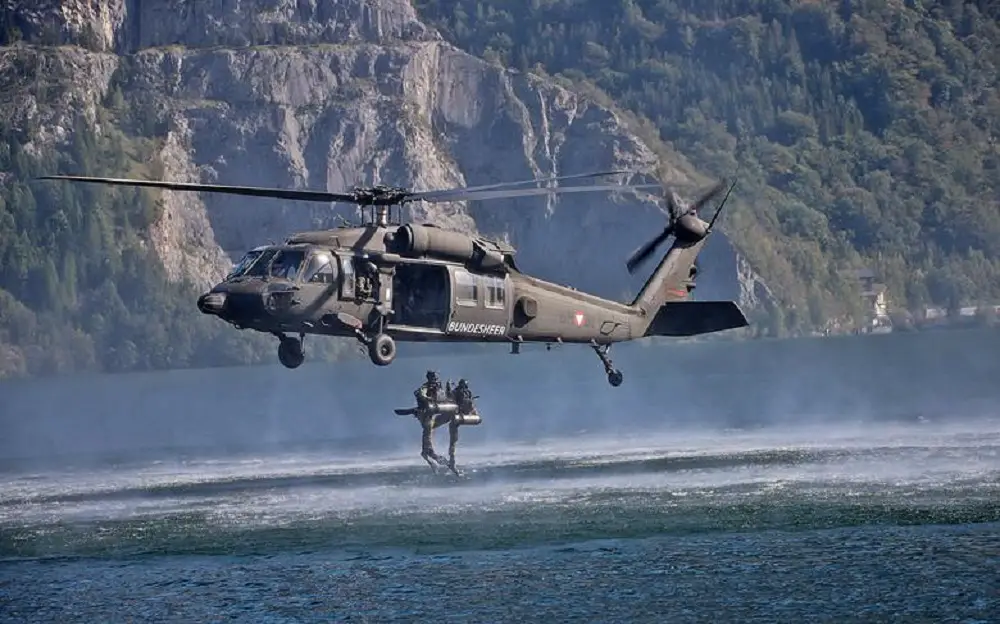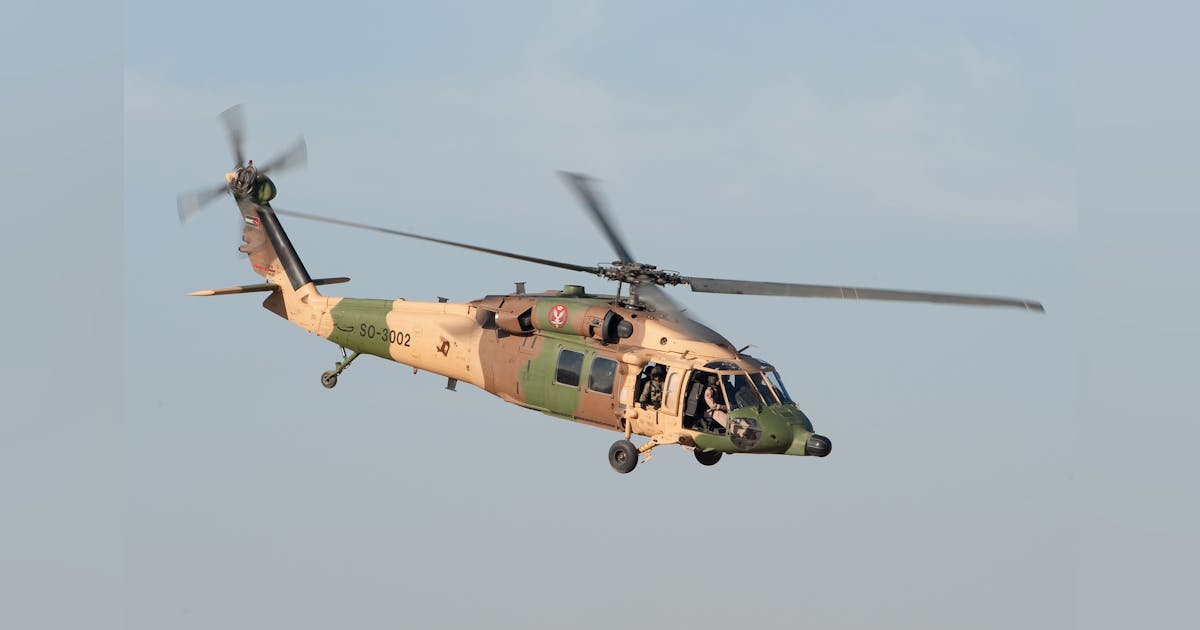Discovering the History and Evolution of the UH 60 Helicopter

Origins of the UH-60
The origins of the UH-60 helicopter can be mapped back to the late 1960s, a period marked by the need for a versatile utility aircraft that might adapt to the progressing demands of modern-day war. The U.S. Military recognized the need for a replacement for the older UH-1 Iroquois, which was becoming progressively insufficient for the intricacies of modern fight circumstances. In 1967, the Military started the Energy Tactical Transportation Airplane System (UTTAS) program, which sought to create a multi-role helicopter with the ability of different objectives, including troop transportation, medical evacuation, and logistical assistance.
The layout competitors brought in a number of aerospace makers, however it was Sikorsky Aircraft Firm that inevitably safeguarded the agreement in 1972. The UH-60 Black Hawk was presented, showcasing innovative style aspects and progressed innovation that set it aside from its predecessors. Its first flight took place in 1974, and the aircraft was officially embraced by the Army in 1979. The UH-60 promptly obtained acknowledgment for its durable efficiency, dependability, and versatility, leading the way for its substantial use in military procedures and solidifying its status as a keystone of U.S. Military air travel.
Secret Design Functions
Innovative layout features of the UH-60 Black Hawk dramatically add to its functional effectiveness. One of one of the most noteworthy facets is its twin-engine configuration, which improves integrity and offers a greater power-to-weight proportion, allowing the helicopter to do under various conditions. The airplane's four-blade major blades system offers enhanced lift and ability to move, important for tactical goals.

In addition, the cabin is designed for optimum visibility and comfort designs, featuring innovative avionics that enhance pilot operations. The modular style of the UH-60 enables simple maintenance and versatility, making it suitable for different mission profiles, from army transport to medevac procedures. These key layout features make certain that the UH-60 Black Hawk stays a dependable and flexible property in military aeronautics, qualified of satisfying the needs of modern war.
Technological Innovations
Recent technical advancements in the UH-60 Black Hawk have significantly improved its functional capacities and flexibility. The combination of innovative avionics, such as digital flight control systems and improved situational recognition display screens, allows pilots to operate with enhanced accuracy and performance. These systems facilitate improved navigation, interaction, and information sharing, enabling the helicopter to work successfully in varied settings.
Additionally, the intro of composite products has actually reduced the overall weight of the aircraft while preserving structural stability. This decrease improves gas effectiveness and expands functional array. The incorporation of advanced rotor innovation, consisting of the usage of four-blade, totally expressed blades systems, has improved lift performance and maneuverability, enabling better handling in various flight conditions.

Moreover, developments in propulsion systems, such as the T700-GE-701D engines, have increased power output and reliability - uh 60. These engines add to premium efficiency in high-altitude and hot-weather problems
Last but not least, the assimilation of self-defense systems and boosted sensing unit bundles improves the Black Hawk's survivability and objective performance. Jointly, these technical enhancements guarantee that the UH-60 Black Hawk stays a crucial possession in modern aviation, with the ability of adapting to the evolving needs of altruistic and armed forces missions.
Function in Military Procedures
As the backbone of united state Military aviation, the UH-60 helicopter plays a crucial duty in different armed forces procedures, acting as a flexible system for fight support, transportation, and medevac objectives - uh 60. Its design includes the capability to run in diverse settings, making it vital for troop motion and logistical support in both traditional and non-traditional war

In medical evacuation circumstances, the UH-60 has actually confirmed very useful, dramatically minimizing the time to transfer damaged soldiers from the combat zone you can try these out to medical facilities. Its innovative avionics and night vision capabilities better make sure objective success under tough conditions. On the whole, the UH-60 helicopter stays a vital property, constantly adapting to satisfy the developing needs of army operations and improving the performance of U.S. pressures worldwide.
Future of the UH-60
Looking in advance, the future of the UH-60 helicopter includes substantial improvements in technology and capacities developed to boost its operational performance. As military operations advance, the UH-60 is expected to include innovative technologies, including boosted avionics, enhanced tools systems, and progressed communication devices. These enhancements will certainly enable higher situational awareness and objective versatility, ensuring that the UH-60 stays an essential asset on the field of battle.
One remarkable development is the combination of fly-by-wire systems, which will certainly boost flight control precision and minimize pilot work. Initiatives to upgrade the airframe and engines aim to enhance speed, variety, and payload ability, consequently increasing the helicopter's operational extent.
The future also holds guarantee for enhanced interoperability with unmanned aerial systems (UAS), allowing collaborated objectives that take advantage of both manned and unmanned abilities. Furthermore, the consolidation of about his expert system and artificial intelligence could optimize trip characteristics and upkeep procedures, resulting in decreased operational prices.
Verdict
The UH-60 Black Hawk helicopter stands for a considerable accomplishment in military aeronautics, advancing from the united state Military's preliminary demands for a versatile energy airplane. Its ingenious style features and continual technical Learn More Here improvements have guaranteed its significance in various army procedures over the decades. As the needs of contemporary warfare modification, the future of the UH-60 will likely entail additional improvements and adjustments, reinforcing its standing as an important asset for militaries worldwide.
The UH-60 Black Hawk helicopter represents a substantial turning point in military aeronautics, emerging from the United state Army's mission for a more functional and trusted utility aircraft in the late 20th century.The beginnings of the UH-60 helicopter can be mapped back to the late 1960s, a period marked by the demand for a functional energy aircraft that could adjust to the developing needs of contemporary war. In general, the UH-60 helicopter continues to be an important possession, continuously adjusting to meet the progressing needs of military procedures and boosting the effectiveness of United state pressures worldwide.
Looking ahead, the future of the UH-60 helicopter includes substantial developments in innovation and capacities developed to improve its functional effectiveness.The UH-60 Black Hawk helicopter represents a considerable success in military air travel, advancing from the United state Army's preliminary demands for a functional utility aircraft.